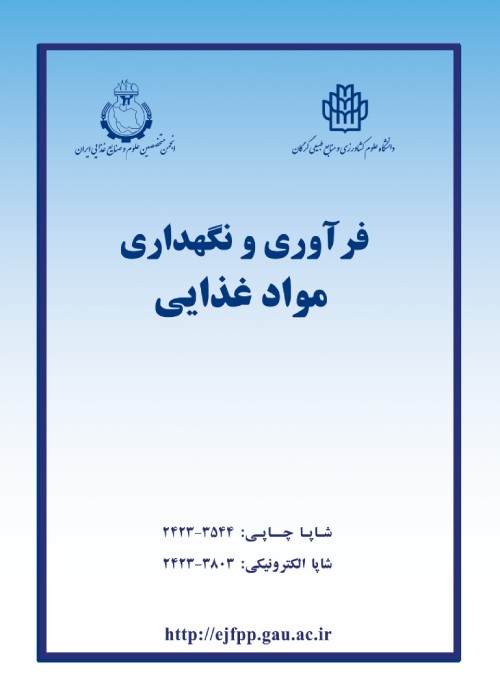Effect of polyphenols from olive (Roghani cultivar of Tarom city) mill wastewater on increasing oxidative stability of ground beef meat
According to consumer awareness of the disadvantages of synthetic antioxidants, today the use of polyphenols in the mill olive wastewater (MOW) as a natural antioxidant in food is highly regarded. Therefore, this study aimed to identify the type and amount of polyphenols present in mill olive wastewater of Tarom culture and then use it as a natural antioxidant in oxidative stability of raw and cooked beef.
For this purpose, olive fruits were prepared manually from Tarom city, after oiling and milling, the type and amount of polyphenols were determined by the HPLC method in mill olive wastewater . The extract added to raw and cooked beef (cooked in water for 30 min) at 10, 20 and 30%. Thiobarbituric Acid, Peroxide value and conjugated dienes were measured for sample oxidative stability. Finally, the samples evaluated for overall acceptability.
The type and amount of polyphenols present in OMW were Oleuropein (20.42 ug/g), fluoric acid (17/91 ug /g), p-coumaric acid (11/76 ug /g), caffeic acid (3.75 ug/g), apigenin (2.5 ug/-g), and cinnamic acid (1.75 ug /g). Analysis of peroxide value as primary oxidation products showed a significant difference between the raw and cooked groups and an increasing trend observed in both groups (Treatments containing polyphenolic extract showed less increase compared to the control sample) which were due to decomposition of primary hydroperoxides into volatile and inactive compounds was lower. Evaluation of thiobarbituric acid as a secondary oxidation product in raw and cooked meat showed an increasing trend over storage time in both groups. The amount of thiobarbituric acid in cooked meat samples was higher than the raw counterpart (P<0.05), probably was due to lipid peroxidation and increased levels of malondialdehyde. The results of conjugates dienes analysis showed an increasing trend in both groups with an increased shelf life. The lower increase of this parameter in the treatment samples containing mill olive wastewater showed that the mill olive wastewater as antioxidant increased oxidative resistance compared to the control group. Overall acceptance of treatments showed that all cooking treatments had higher scores than their raw counterparts (p <0.05), and samples contain 30% extract) achieved the highest score for up to 8 days.
research has shown that the rate of lipid oxidation in cooked meat is higher than raw meat because it changes the cooking process of antioxidant compounds, damages the cell structure, and exposes the lipid membrane to the environment.
- حق عضویت دریافتی صرف حمایت از نشریات عضو و نگهداری، تکمیل و توسعه مگیران میشود.
- پرداخت حق اشتراک و دانلود مقالات اجازه بازنشر آن در سایر رسانههای چاپی و دیجیتال را به کاربر نمیدهد.



